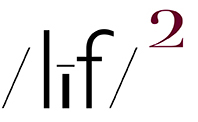AFTER A WEEK OR MORE OF AGONIZING / STRESSING OVER THE idea of reinventing my picture making M.O. for the purpose of creating a new body of work about the place where I live, I came to question, having already created a body of work, the adirondack snapshot project, what exactly is the point of reinventing the wheel? My conclusion? Other than slathering some salve on an acute case of artist angst, there really is no valid point at all.
The adirondack snapshot project-which I will repackage under the title of a new adirondack vernacular-is comprised primarily of well over 200 pictures made over the the couple of decades. (although a number of pictures are culled from the late 1970s>2000). To that number, I can add up to 70-80 more pictures made over the past 2-3 years (made after my adirondack snapshot project solo exhibition). That written, I could potentially end up with 500+ new adirondack vernacular “snapshots”.
The new title, a new adirondack vernacular is co-opted from the book (published 20 years ago), Adirondack Vernacular - The photography of Henry M. Beech. A book written-with 250 photographs-by a Syracuse University professor. While the book is not a photography book , per se, inasmuch as the pictures are presented addendums to the text, it is an interesting take on the life, times and photographs of Henry M. Beech (1863-1943).
From the book:
Henry was a local, an insider to the world he photographed, a person intimate with the region’s people and geography.…[I]t was from that position that he photographed the Adirondacks. In addition to shooting as a local, he had little formal education and did not seem to be professionally trained in his craft. He lived far enough away from mainstream society that his work was not dominated by national styles and trends, and was unencumbered by art-world pretense. He was free to focus on different subject matters, add quirky elements to his pictures, experiment with form and composition, and do things with images that other photographers would not. The result is a vernacular documentary style that is unique, engrossing, and significant.
Believe me or not, even though I have had the book for a number of years-I believe I received it as a gift-this morning was the first time I read the previous excerpt. And, at the risk of engaging in self-aggrandisement, I was struck by the idea that I am, Adirondack picture making wise, cut from the same cloth as Beech. Especially so, in that he was in his Adirondack picture making prime for approximately 20 years (1905-1925). A time frame that approximates the period of the bulk of my adirondack snapshot / vernacular picture making.
Are my adirondack snapshot / vernacular unique, engaging, and significant?
Re: unique - I am unaware of any other picture maker who is creating and exhibiting Adirondack “snapshots”. Nor do I know of any picture maker who has a body of diverse work that reflects the everyday life-people, places / sights, and things-of living in the Adirondacks.
Re: engrossing - Judging by the reaction and comments I have received to solo exhibitions (here in the Adirondacks) of my work, viewers of my photo books, and comments from gallery directors, there is at least a better than average interest in the work.
Re: significant - To whom? The Art World? Locals? Adirondack tourists? Not for me to judge. Only time will tell. Although, that written, iMo, it is a significant body of work, if only in size and scope.
